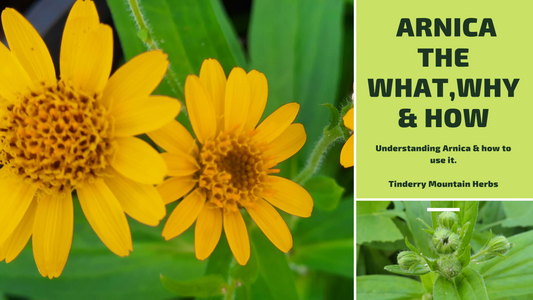Why are some herbs endangered and which ones are they?
Quite frankly your cup of coffee could be more sustainable than some herbs in commerce.
The raw unpleasant truth is that there are a lot of herbs being harvested from wild populations and made into medicine that are scarce in their habitat.
This is not sustainable or ethical...
It also not much talked about...
Just because it’s a herb does not mean that everything is green, eco conscious and sustainable.
Quite frankly your cup of coffee could be more sustainable than some herbs in commerce.
Why they are endangered is due to over collection from the wild as well as habitat destruction. Add to that the lack of scale in cultivation of the herbs themselves as sustainable farm crops.
What herbs are endangered is a bit clearer. The best work done currently is in North America where the United Plant Savers (UPS) group works specifically with native herbs of North America under threat. However, in many other countries the situation is not clear.

Why should we care? – An important range of our herbal Materia Medica comes from North America. Plants like Golden Seal, Black Cohosh, Slippery Elm and Echinacea are herbs that have become very well-known and widely used. They have also been over harvested in the wild.
UPS is doing the best work that I know of in this area now
UPS have assessed 20 herbs at direct risk of loss and another 23 on their watch list. You can view their full list from this link.
Common herbs most of us know about are actually on the list such as – Echinacea, Golden Seal and Slippery elm.
A fundamental piece of work UPS carries out is developing and updating the at-risk and to-watch species list of herbs. These lists contain herbs currently assessed as impacted by human activities (forest clearing – over harvesting). All of the herbs mentioned above are classified as at-risk.
Have a look at the initiatives they support:
Botanical Sanctuary Network – People are encouraged to grow a range of at-risk plants in their own area.
UPS Botanical Sanctuary – situated in Ohio this 370-acre property hosts education and research activities. Acts as a plant repository and propagation centre. You can visit and stay on site.
Forest grown verified program – This program was established to create a voluntary, third-party verification process for non-timber forest-grown products that are produced and harvested in a sustainable and legal manner. That means herbs.
Sacred Seeds – A global non-profit organisation creating and supporting plant sanctuaries that address the rapid loss of biodiversity and cultural knowledge. They do this through living gardens, containing locally important plants focused on medicinal, ceremonial, food, and craft use.
Community engagement – Supporting artist fellowships – community awards for conservation and partnering with herbal education providers.
So here's an action we can all take... For a modest amount of money per year you can support their efforts.
In my growing work at the farm over the last 14 years I have grown at least 10 species from the at-risk list and 7 from the to-watch list.
It’s an initiative that can be carried out in many parts of the world.
You can make an ongoing financial contribution and support UPS or take on growing some of your own medicinal herbs like I did – It all helps.
We need to take endangered and at- risk medicinal plants into our loving care and respect them rather than pillage their wild refuges. There is a lot of right livelihoods there for the creation if we took this matter seriously.
There is a lot of right livelihoods there for the creation if we took this matter seriously.
Here is link to their web page and At Risk list.




